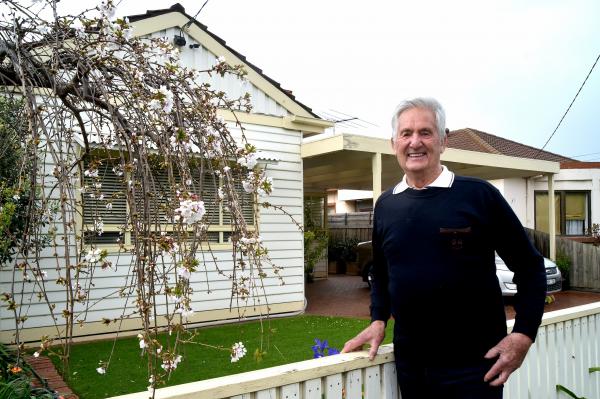Goya Dmytryshchak
Maribyrnong residents slugged with double digit rates increases are questioning the council.
Yarraville’s Bruce Light said his bill had jumped 14 per cent for 2021-22.
“We’re in a COVID crisis,” he said.
“Last year, the council made the right decision under the mayor, Sarah Carter, when she said because of the stress, which was caused to the community, they went for a zero increase.
“The financial burden being imposed on Maribyrnong ratepayers has become too much.
“The stress, both mental and financial, resulting from the COVID restrictions and constant lockdown has hurt and is hurting many Maribyrnong residents.
“Council’s decision to raise rates, based on unrealistic property values is only going to add to their mental stress and maybe push them over the edge.
“My pension’s gone up 1.1 per cent and my rates have gone up 14 per cent.”
Yarraville’s Martin Hermans said he was shocked at his increase of 18 per cent.
“As a self employed electrician, I am already doing it hard raising two schoolchildren throughout his never ending lockdown,” he said.
“I was aghast when I received my 2021-22 rates notice indicating an increase of a whopping 18 per cent.
“For the life of me I cannot understand how council can substantiate such a horrendous burden on its residents.”I contacted the rates department who referred me to Westlink Consulting for an unsatisfactory explanation of comparable house sales in my neighbourhood.”
Corporate Services Acting Director Lisa King said the spread of valuation movements across different property types resulted in a variation in the rate cap per each property.
“Maribyrnong City Council applies the Capital Improved Value (CIV) system of rating, which is the most commonly used valuation system by Victorian councils and one that recognises the full development value of the property,” she said.
“It’s also reflective of the general market value of the property as at the date of valuation.
“The calculation for CIV includes a general rate for residents.
“A differential rate is applied to other types of land, such as commercial, industrial and vacant land and to commercial and industrial premises – when compared to the residential rate in the dollar.
“This means that in 2021-22, for each $1 a resident pays, a commercial property will pay $1.35, an industrial premise will pay $1.60, a residential vacant property will pay $2 and commercial and industrial vacant properties pay $3.
“This spread of valuation variation results in a +/- 1.5 per cent rate increase across the different property types and suburbs compared to the previous year.”








